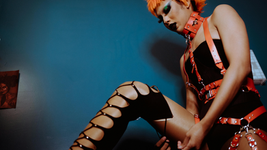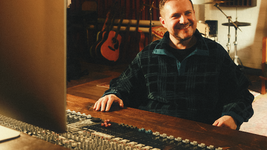Urban Chronicles - A portrait on Iain Sinclair
- Maximilian Priebe
- Nov 23, 2018
- 5 min read

Iain Sinclair, one could say, is obsessed with London. The Last London, one of his most recent publications is, if we want to give credit to Guardian writer John Day, and depending on how we count, Sinclair’s 18th book about the capital. Because overall, this vast collection of literature – reaching probably well over 5000 pages – is committed to one goal: portraying, describing and analysing the city in its transition from the 20th to the 21st century. Sinclair tries to capture the soul that endows London, its identity behind the touristy sights of attraction, museums, Thatcherian office buildings and skyscrapers for international finance. He is the chronicler of the suburbs, of Hackney, of the orbit that surrounds London. And he is famous for it.
So many authors, journalists, English Literature Ph.D. students, bloggers and arty columnists have written about Sinclair that it does not really seem like a very witty thing to be doing by jumping on the bandwagon. Nevertheless, when I first came to London and talked to fellow students in the philosophy department, or mentioned Sinclair on Campus, I was surprised that his name had rarely been uttered on the student scene – at least in the one that I could explore in the first few weeks. By chance, I had come across The Last Londonin the Waterstones on the UCL Campus, and as I was slowly, but magically drawn to the book, I had the feeling of having discovered a treasure that was worth being shared – even though, when I looked it up, the treasure itself was actually more than an open secret.
For my first weeks in London, Iain Sinclair became my companion. This does not lack a certain irony. Sinclair, who has been living in London for more than fifty years, knows the tiniest, obscurest, scruffiest, weirdest, most hidden places of the City, and much of his literature is just about describing precisely these areas. I, a somewhat lost European student being washed ashore the banks of the Thames in the last waves of adolescent Pete-Doherty-romanticism, political ignorance, emotional confusion and stunning naïveté concerning my budget, had not even heard of the Shard when I set my feet on the English ground in St. Pancras International. The gap between me and London literature could not have been bigger. And I could not have been more vulnerable at the moment when I accidentally opened the book and came across those Sinclairian pictures of banished asylum seekers, empty churches and urban flâneurs that immediately caught me: "This was London as it used to be, a broken democracy of warring clans; humans making the best of the mess in which they had landed themselves.“ (6)
It was a phrase that I had encountered without knowing the book’s narrative, and a few pages later I discovered that such a narrative did not exist. The phrases just went on like that. Phrases that try to put London down to an aphorism of three lines and fail, phrases that ascend again, daring to advance to the next metaphorical description, phrases evolving into dense chapters of highly associative prose from which single statements protrude like lonesome monuments of a brick wall: “London, after so many abortions and rebirths, is an exhausted womb.” (17)

London Carnaby Street in 1968
A third of what Sinclair is writing about I did not understand. This was not even due to his proliferating style. He simply embeds his local, urban knowledge into the tiniest passage. When he wants to describe a beggar in the street, he might well start off with the names of parks, streets, railroad stations, squares, houses, even neighbours that remind him of such a miserable creature and that I had never heard of; and I doubt many Londoners actually have. In a certain way, the immediate structure of Sinclair’s writing reflects London’s frantic nature. Given that, I was lost. But I had the feeling that if I could actually learn something about this city I had been stranded in, then this book was going to be my teacher.
In the 60s, Iain Sinclair himself had been stranded in London. Born in Cardiff and being schooled in Cheltenham, he had done his studies in Trinity College, Dublin, where he had also edited the Icarus Magazine. Eventually, he had ended up in London, in order to attend the Courtauld Institute of Art (that is, again ironically, located in the Somerset House right next to Strand Campus where I am studying right now). During this time, he became involved with the avant-garde poetry scene, until, in the mid-70s, he published his first two books: Lud Heatand Suicide Bridge.In these works, Sinclair used a style that until today is closely associated with his name: Psychogeography.
The term sounds more bizarre than it is, and it is still apt to catch what Sinclairian prose is all about. Psychogeographyis related to the world of notions of the French Situationists and Poststructuralists that perceived cities both as hostile and challenging environments, as urban landscapes in which humans needed to intervene. This leftist, Marxist tradition definitely influenced Sinclair, but his writings are less political and more poetical. They all start with what French Psychogeographers would call dérives- walks. Sinclair does not give us a narration, he strolls through the pages. This is paradigmatic. And depicts reality: Sinclairs books are basically notes, descriptions, memories and stories of walks that he has taken. Reading Sinclair is like following a detective investigating his district: the district is East London; the means of investigation are a pencil and a block. And as I followed Sinclair through the pages, I was actually taking walks with him. Through the tiny window of a book, I explored a town; not only literarily, but literally. I recognized that many of his walks started in places not far off from my accommodation; and eventually, I was reading Sinclair sitting in a narrowboat in the Canals of Hackney Wick, at Victoria Park, in Bow, Mile End or Bethnal Green – being guided by pages of fiction that merged into reality. And even places that I have not even been to – Shoreditch, Whitechapel, even Hyde Park, whatsoever! – are by now already marked on my imaginary map of the city.
But, The Last London, like a typical Sinclair book, cannot be called classical “fiction”. It is a mix of prose and literary essay. It lacks a rigorous narration and rather orchestrates motives and atmospheres. It explores, explains and evaluates the urban material that the city provides. In this, it is similar to Sinclairs most famous books Hackney - That Rose-Red Empire, in which he observes Hackney during its times of Gentrification, Ghost Milk, in which he criticizes the Olympic Games in 2012, London Orbital, a study of the M25 ring around London, or Downriver, a comical critique of the Thatcher government. This also means that a lot of topics and figures appear again and again – questions and characters that Sinclair had already worked on under previous titles. Of course, I understood less than the half of it. I was doubly overwhelmed: Initially by the city, that was still new to me, then once again by the Sinclairian universe that I had accidentally entered.
Further Reading
Day, John (2017): The Last London by Iain Sinclair. Review - an elegy for a city now lost. In The Guardian, 9/27/2017. Available online at https://www.theguardian.com/books/2017/sep/27/last-london-iain-sinclair-review.
Sinclair, Iain (2018): The Last London. True fictions from an unreal city. London: Oneworld.

































